How to Hang Drywall

Last updated May 1, 2025
Whether you're finishing an add-on to your home or refinishing a basement, adding drywall is an essential step. Learn how to hang drywall the proper way using basic tools and help from a friend. We'll break down every step of the process, including how to install drywall around windows and outlets. With patience, the right tools and a friend to help you, hanging drywall is not very difficult.
Tip: When installing drywall, place plastic sheeting at each door leading to other rooms to trap dust. Also, shut off the air conditioner to avoid getting dust particles in the ductwork and spreading it throughout the house.
Safety Note: Wear a dust mask and safety glasses to avoid getting dust particles in your lungs and eyes when installing drywall.
Difficulty:
Intermediate
Duration:
Over 1 day
Table of Contents
Measure the Wall
Drive Screws Into the Drywall Sheet
Add Additional Sheets of Drywall
Plan for Windows, Doors, Outlets and Other Fixtures
Install Final Sheet of Drywall
Install Drywall to Reach the Floor and Frame Outside Corners
Measure the Wall
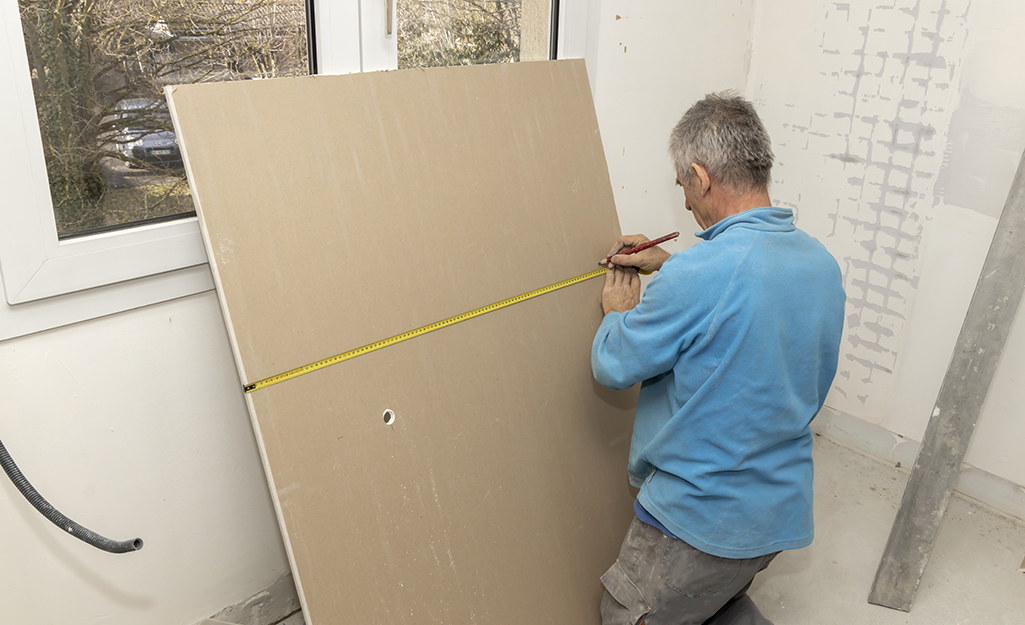
- Using a tape measure, determine the width of the wall and cut the drywall sheet so it is about a quarter inch shorter than your measurement.
- Have someone help you prop the drywall up and position it tight against the ceiling.
- If you need any further help measuring, use our drywall calculator.
Tip: Using a drywall lift will help you position the sheets without extra hands.
Drive Screws Into the Drywall Sheet
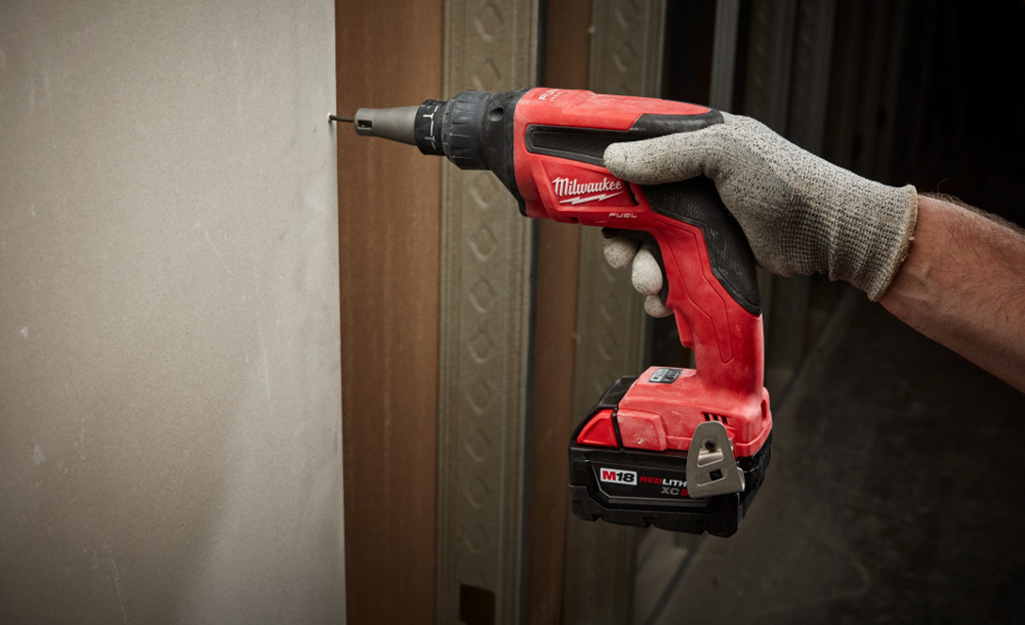
- Begin driving drywall screws into the middle of the drywall sheets at a convenient height.
- Once the first screws are in place, put in the rest, working your way from the center of the panel toward the outside.
- Drive the screws 16 inches apart and into all of the studs.
Add Additional Sheets of Drywall
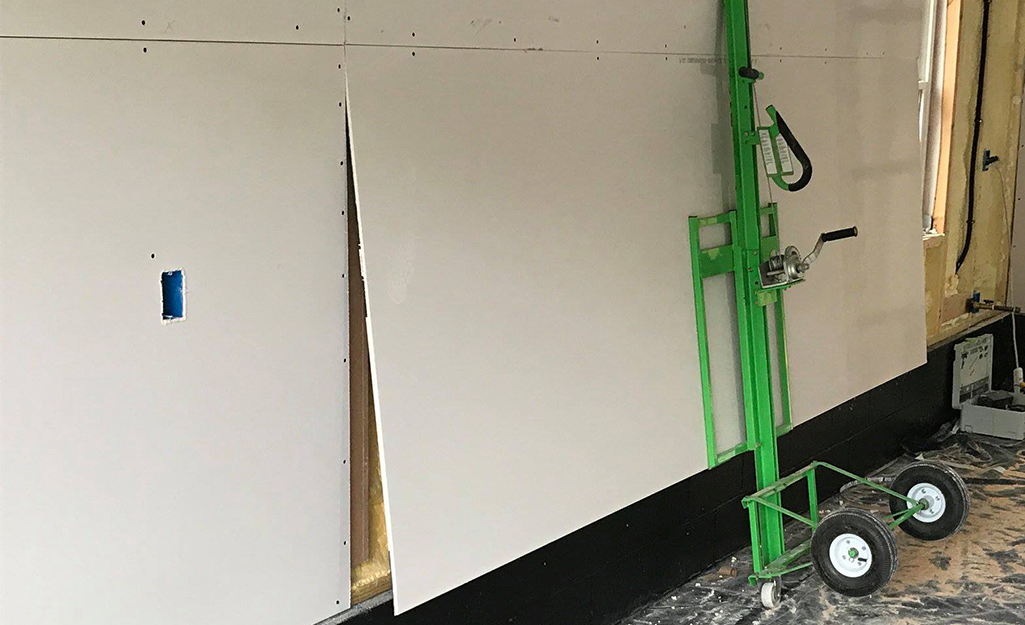
Hanging drywall horizontally can lessen the amount of taping required and place the seam at a convenient height. A longer wall may need more than one sheet of drywall. Using a drywall lift can make this step easier.
- Start by hanging a full sheet as before.
- Tack it in place, and then drive drywall screws every 16 inches and into the studs.
Plan for Windows, Doors, Outlets and Other Fixtures
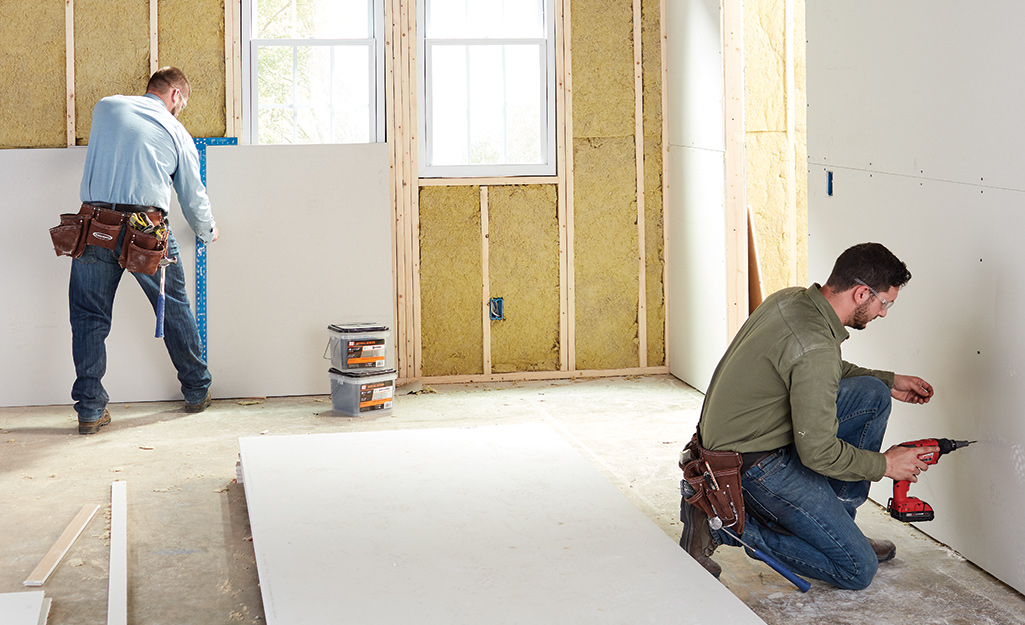
If the sheet covers a window that has yet to be installed:
- Cover the window with a drywall panel and insert a few screws to mark the corners of the future window.
- If you have a drywall router, plunge the router into the approximate center of the window and cut sideways and vertically until you find the edges. If you don’t have a router, use a handsaw.
If the window is in place:
- Take off the window trim and cut the window opening in the drywall sheet before you hang it.
- Lay out the cut by positioning the sheet along the floor and marking where it meets the bottom edge of the window.
- Measure from the ceiling to the window top to lay out the top edge of the cut.
To cut around a door:
- Lay out a door cut the same way as a window.
- Remove the trim. Lean the piece of drywall against the opening, mark the location of the studs, and draw a line for the top of the door opening.
- Make cuts for both doors and windows with a router or drywall saw and screw the panels in place with drywall screws.
To cut for outlets or other wall fixtures:
- Use a spiral saw.
- Note the height of the outlet box or fixture and draw marks on the floor to show where it is.
- Remove the wires and screw the drywall in place, covering the box and driving just enough screws to keep the drywall in place.
- Find the inside edge of the box or fixture by plunging the spiral saw into the box and cutting sideways to the edges in a counterclockwise direction.
Tip: If you are using a hand saw, rub the edges of the outlet box with a dry-erase marker or lipstick and put the drywall panel in place in front of it with two screws for positioning. Rub along the front of the panel where the outlet box is. Then remove the panel and cut along the marks on the back of the panel. Reattach the panel and add drywall screws as necessary.
Install Final Sheet of Drywall
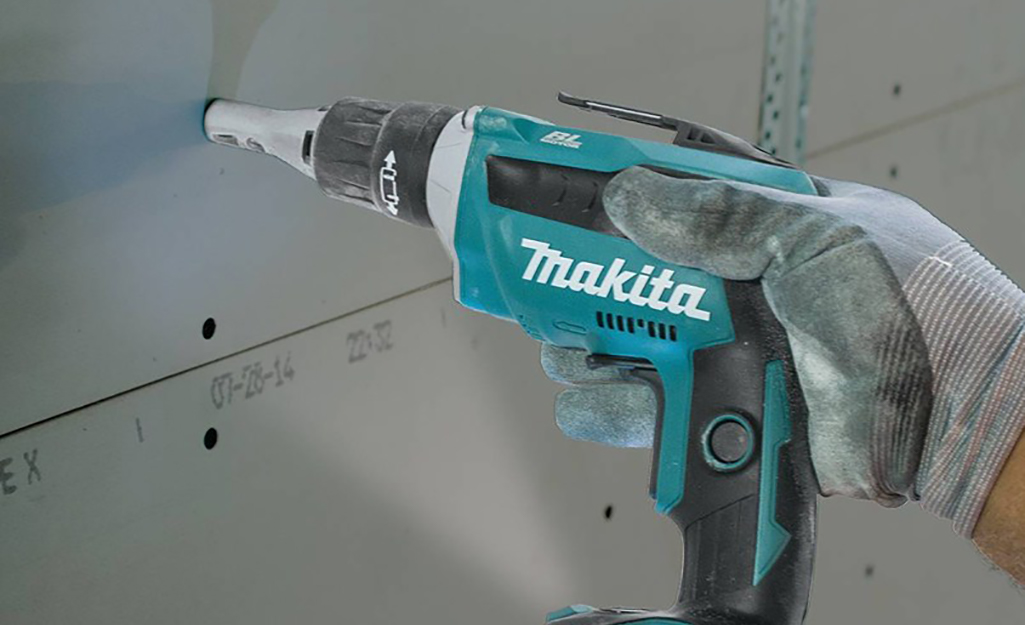
- Cut a piece of drywall 1/4-inch short to fit between the corner and the last installed panel.
- Screw the drywall in place.
- Where the panels meet, cut a V-groove into the short non-tapered ends with a utility knife, as this will make hiding the joint easier when you're taping.
Install Drywall to Reach the Floor and Frame Outside Corners
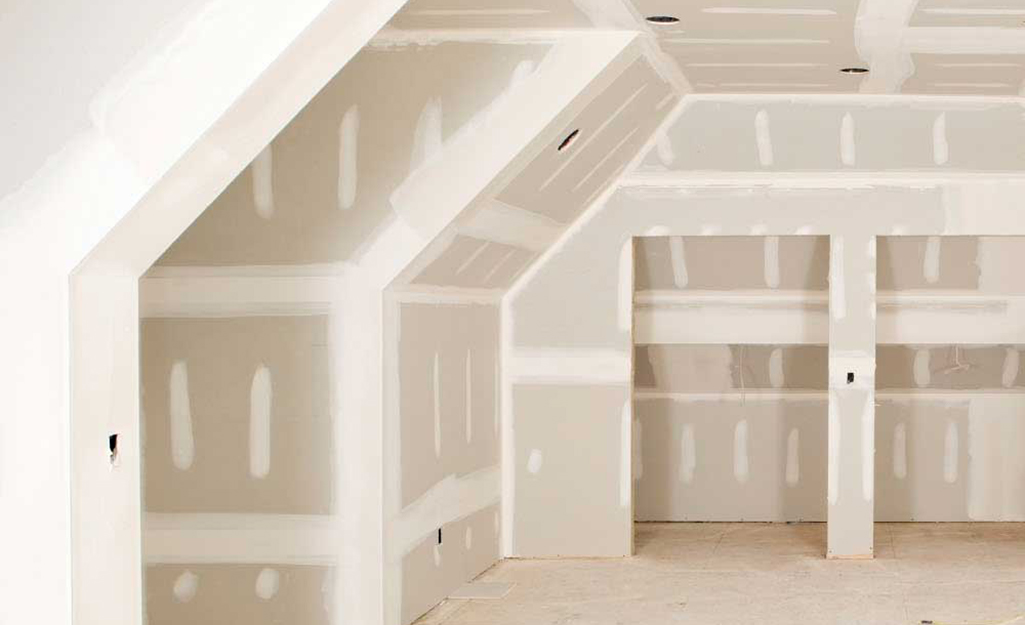
- Begin the bottom row with a shorter piece so that the seam in the top row will not be directly above the seam in the bottom row.
- Position the piece, lift it with a drywall lift, and screw it in place. When the small piece is in place, install the longer piece.
When framing outside corners:
- Cut a piece of drywall long so that it hangs over the corner.
- Trim it with a spiral saw after it’s in place.
- Hang the abutting panel, leaving it long, and trim it to create a tight, well-fitted corner.
- Protect the corners with metal corner bead. A bead that is a bit long will kink when you fasten it. To prevent this, cut the bead with tin snips, leaving it about 1/2-inch short. Hold the bead tight against the ceiling. Screws will distort the bead, so nail it in place, spacing the nails every 9 inches.
Tip: There should be a slight gap between the floor and the drywall so that the drywall won't jam against bumps in the floor. The baseboard will cover it later. If necessary, trim the sheet to leave a half-inch gap.
Learning how to install drywall is very much within the reach of the average DIY enthusiast. With patience, the right tools and a friend to help you, hanging drywall is not very difficult. Once you've learned how to hang drywall, learn how to tape and finish the installed drywall for professional-quality results. The joint work is really easier than it seems and provides very satisfying results. When determining how much drywall you need, don't guesstimate, calculate. Know exactly how much you need with our drywall calculator. If your wall takes a little damage, we can show you how to repair drywall with a drywall repair kit.
The Home Depot is a great source for top-quality materials and tools, right down to the joint compound. If you need to rent a drywall lift or ladder, we can help with that too.



























